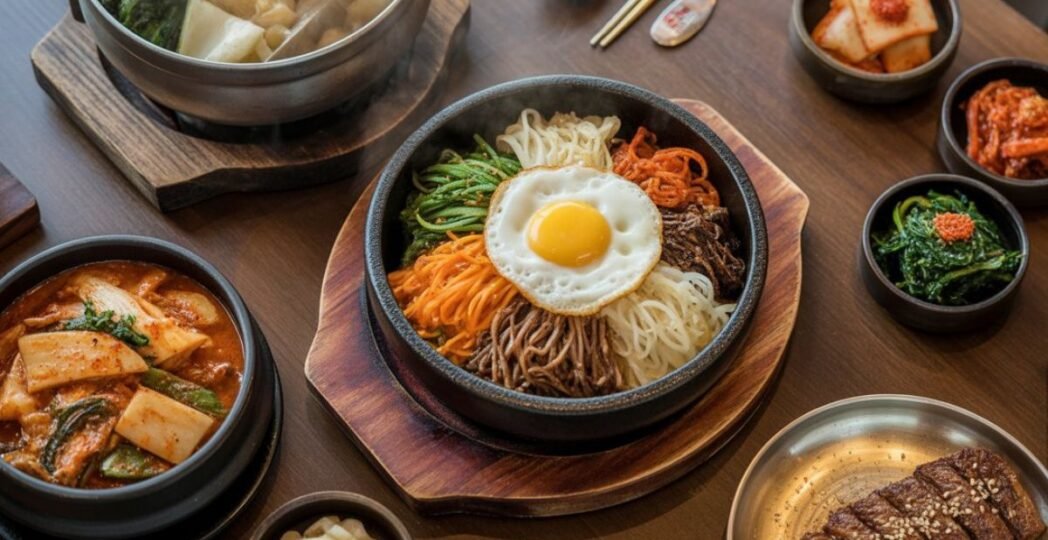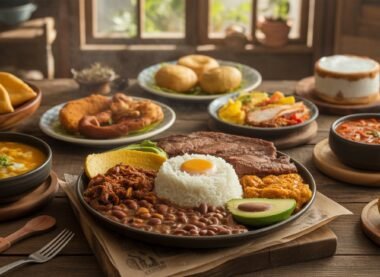Korean food is more than just a meal — it’s a vibrant expression of culture, history, and community. Rooted in balance, color, and nutrition, it reflects centuries of culinary tradition that continues to captivate people worldwide. From spicy stews and sizzling barbecue to fermented side dishes and hearty soups, Korean food offers an exciting mix of tastes and textures that awaken all the senses.
In this guide, we’ll explore the rich world of Korean restaurants — from essential ingredients to the most popular dishes that define it. Whether you’re a food lover, traveler, or home cook, you’ll discover why Korean food has become one of the most loved cuisines in the world.
A Brief History of Korean Cuisine
The history of Korean cuisine stretches back thousands of years. It has evolved through influences from neighboring China and Japan, while maintaining its distinct identity. Historically, Korea’s cuisine was shaped by agriculture and geography — fertile valleys produced rice, while the surrounding seas provided abundant seafood.
During ancient times, fermentation became an essential preservation method. Koreans developed sauces like doenjang (fermented soybean paste), gochujang (red chili paste), and ganjang (soy sauce), which remain fundamental to Korean cooking today.
Even as modern trends influence dining habits, traditional Korean food continues to thrive. Restaurants across Seoul, Busan, and beyond serve both timeless recipes and innovative takes on classic dishes, bridging the past and the present.
Classic Korean main dishes
Bibimbap (비빔밥):
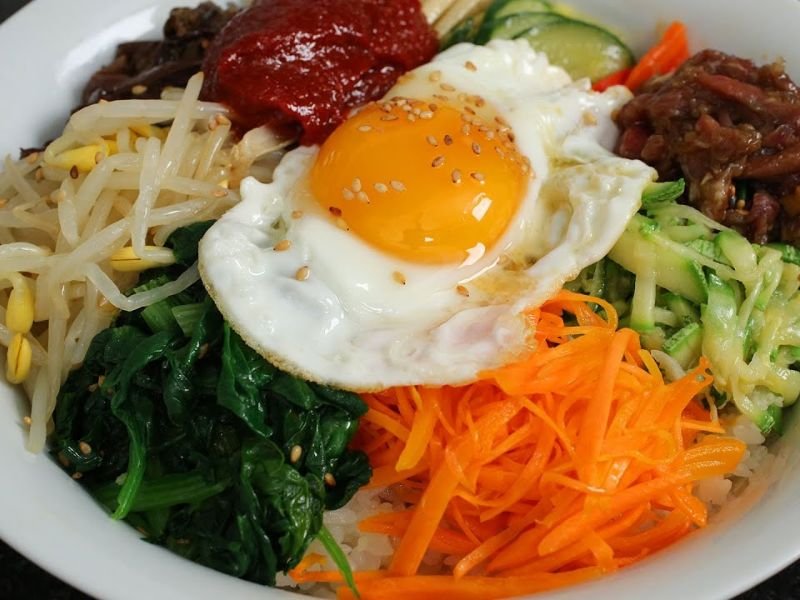
Bibimbap is one of Korea’s most iconic dishes, known for its vibrant presentation and balanced nutrition. It’s a rice bowl topped with a colorful mix of seasoned vegetables such as spinach, carrots, bean sprouts, mushrooms, and zucchini, along with sliced meat (usually beef) and a fried egg. Before eating, gochujang (Korean chili paste) is added, and everything is thoroughly mixed to combine flavors and textures. Each bite delivers a perfect harmony of spicy, savory, and slightly sweet tastes. Bibimbap not only looks beautiful but also represents the Korean philosophy of harmony in food — combining color, flavor, and nutrition in one bowl.
Bulgogi (불고기):
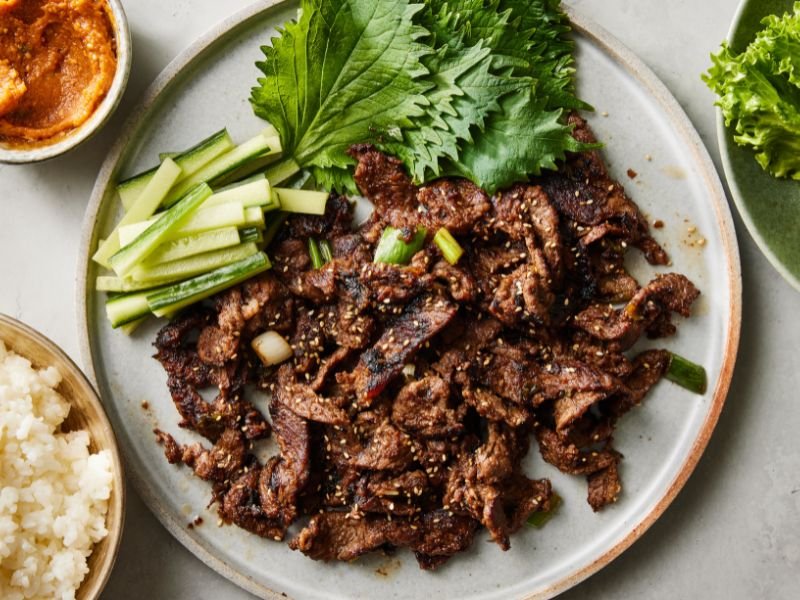
Bulgogi is a beloved Korean dish made from thinly sliced marinated beef grilled or pan-cooked to perfection. The meat is soaked in a savory-sweet marinade featuring soy sauce, sugar, garlic, sesame oil, and a hint of pepper. This combination gives the beef its tender texture and caramelized flavor when cooked. Bulgogi is often enjoyed wrapped in lettuce with rice, garlic, and ssamjang (spicy paste). Sometimes it’s prepared at the table on a grill, creating a fun, social dining experience. Whether served with rice or as part of a larger meal, bulgogi captures the perfect balance of sweetness, smokiness, and umami flavors.
Japchae (잡채):
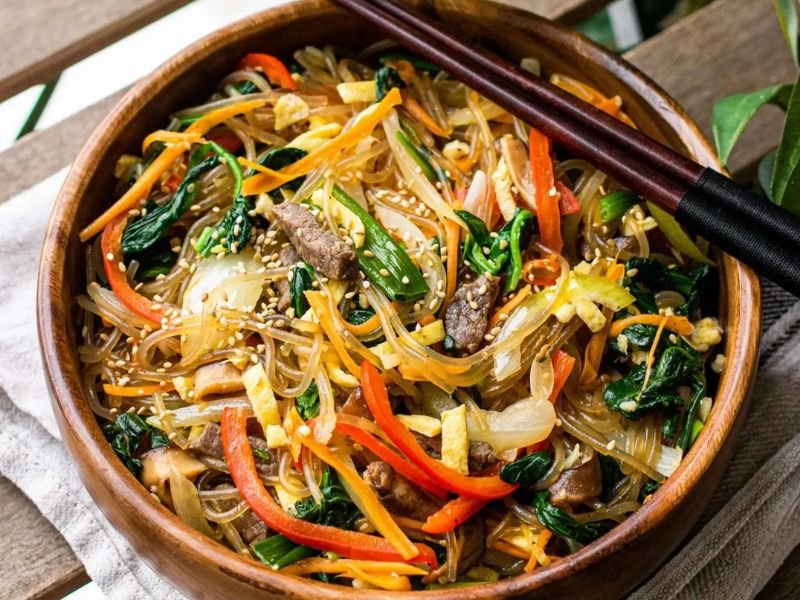
Japchae is a delicious and colorful stir-fried noodle dish made with glass noodles (dangmyeon) derived from sweet potato starch. It’s mixed with an assortment of vegetables such as carrots, spinach, onions, and mushrooms, and often includes slices of beef or pork. The dish is seasoned with soy sauce, sesame oil, and a touch of sugar, giving it a subtly sweet and nutty flavor. Japchae can be served warm or at room temperature, making it a popular choice for celebrations and festive gatherings. Its glossy noodles, vibrant vegetables, and fragrant aroma make it both visually appealing and irresistibly tasty.
Korean Fried Chicken (치킨):
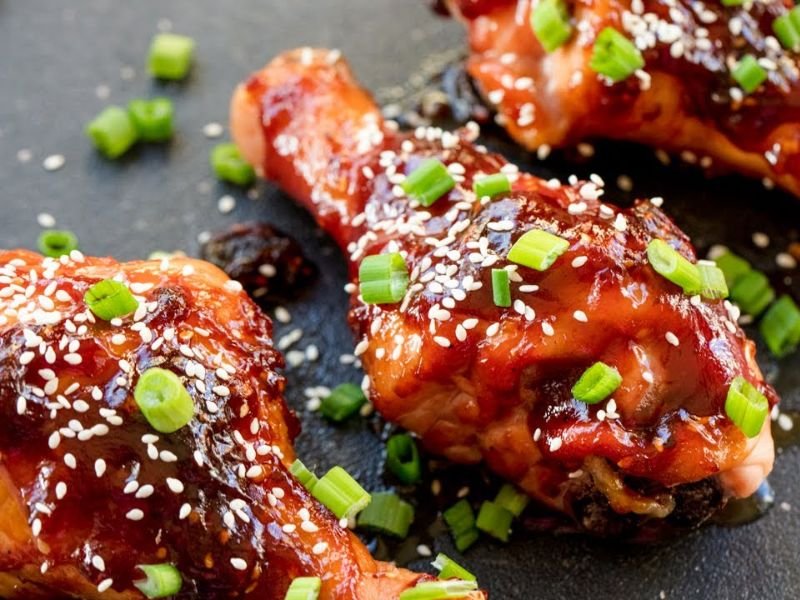
Korean Fried Chicken, often called “chikin,” is a crispy and flavorful twist on the classic fried chicken. What makes it special is its thin, ultra-crispy crust and tender, juicy meat inside. It’s typically double-fried to achieve that perfect crunch, then coated with a sweet, spicy, and sticky yangnyeom sauce made from gochujang, garlic, soy sauce, and sugar. Some prefer it plain with a light sprinkle of seasoning. It’s commonly paired with pickled radish and cold beer, a combination known as “chimaek.” Whether spicy or soy-glazed, Korean Fried Chicken has become a global sensation for its addictive flavor and crunch.
Samgyetang (삼계탕):
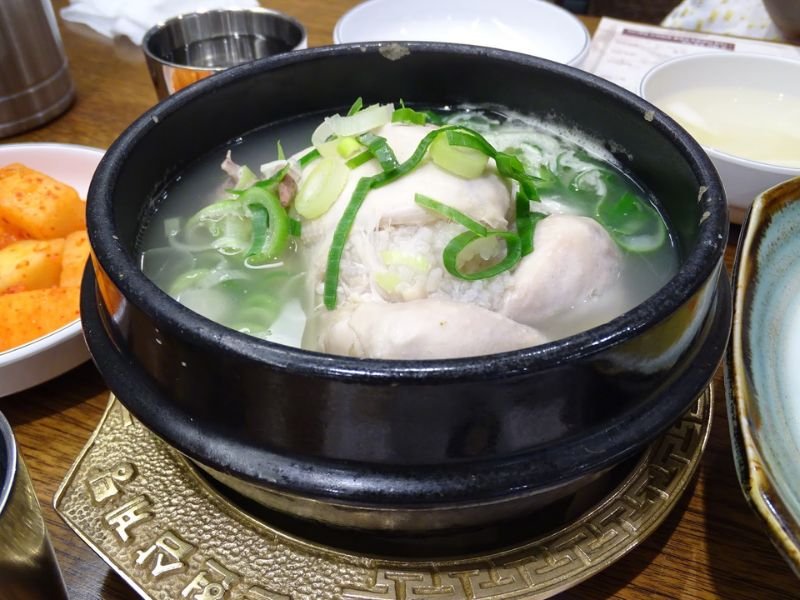
Samgyetang is a traditional Korean soup made with a whole young chicken stuffed with glutinous rice, garlic, jujubes, and ginseng. It’s simmered for hours until the broth becomes rich, aromatic, and nourishing. This dish is especially popular during the hot summer months, based on the Korean belief of “fighting heat with heat.” The ginseng adds an earthy bitterness balanced by the natural sweetness of the broth. Samgyetang is valued not just for its flavor but for its health benefits — believed to boost energy and strengthen the immune system. It’s a comforting and rejuvenating meal enjoyed across Korea.
If you love these traditional Korean dishes, you might also enjoy exploring chinese restaurants in the USA .
Korean Soups and stews (Jjigae)
Kimchi Jjigae (김치찌개):
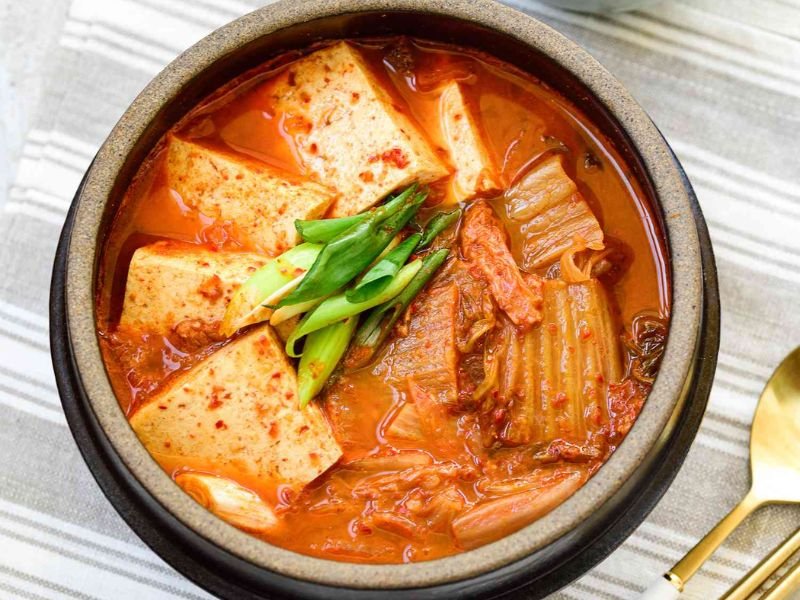
Kimchi Jjigae is one of Korea’s most beloved comfort foods — a hearty, spicy stew made primarily with aged kimchi, pork, tofu, and sometimes noodles or seafood. The older, fermented kimchi adds deep tangy flavor, while gochugaru (red pepper flakes) enhances the spice. The stew is simmered until the broth becomes rich and flavorful, often served bubbling hot in a stone pot. Kimchi Jjigae pairs perfectly with a bowl of steamed rice and is a common home-cooked dish in Korean households. It’s warming, satisfying, and a true taste of Korean everyday cuisine that showcases the depth of fermented flavors.
Sundubu Jjigae (순두부찌개):
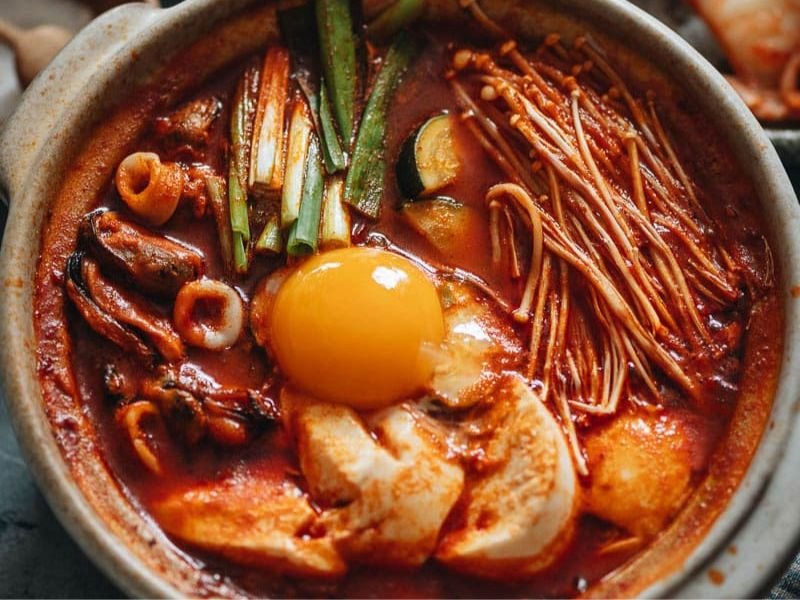
Sundubu Jjigae is a spicy, comforting stew made with uncurdled soft tofu (sundubu), vegetables, and often seafood or thin slices of meat. The broth, infused with gochugaru and garlic, is rich, fiery, and deeply satisfying. A raw egg is often cracked into the bubbling stew just before serving, creating a creamy texture as it cooks. Served in a hot stone pot, this dish is enjoyed with rice and kimchi on the side. Sundubu Jjigae perfectly balances soft textures with bold flavors, making it a go-to meal during cold weather or whenever comfort food is needed.
Doenjang Jjigae (된장찌개):
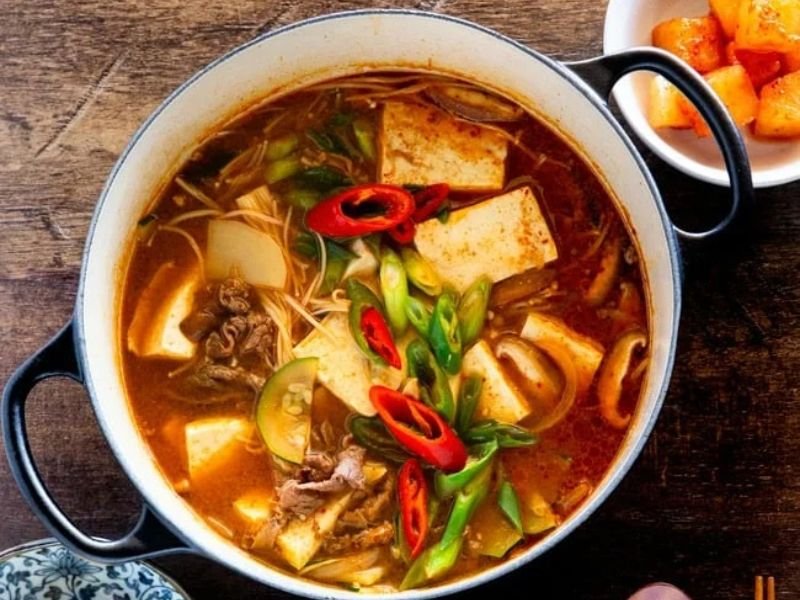
Doenjang Jjigae is a traditional Korean stew made from doenjang, a fermented soybean paste similar to miso but richer in flavor. It’s simmered with tofu, zucchini, potatoes, onions, mushrooms, and sometimes small clams or anchovies to deepen the umami taste. The broth is hearty, salty, and earthy, providing a rustic flavor that feels both homely and satisfying. Often served as part of a Korean meal, Doenjang Jjigae is enjoyed daily in many households. It reflects the essence of Korean home cooking — simple, nourishing, and full of rich, fermented depth.
Korean Street food and snacks
Tteokbokki (떡볶이):
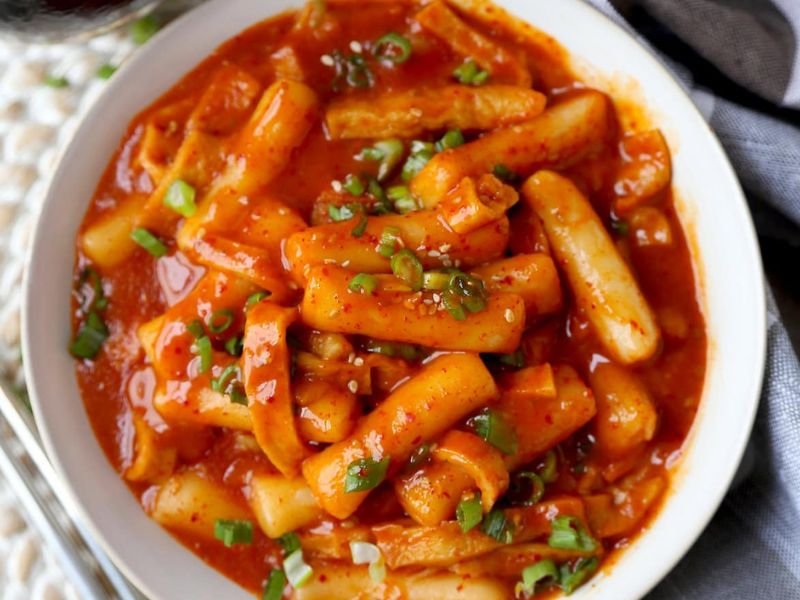
Tteokbokki is a popular Korean street food made with chewy cylindrical rice cakes stir-fried in a spicy-sweet gochujang sauce. Often combined with fish cakes, boiled eggs, and scallions, it’s a beloved comfort snack among all ages. The sauce’s deep red color and balance of heat and sweetness make it both addictive and satisfying. Tteokbokki is commonly found in street stalls across Korea and is often enjoyed with friends while chatting or as a late-night snack. The dish perfectly embodies the bold, playful side of Korean street food culture.
Gimbap (김밥):
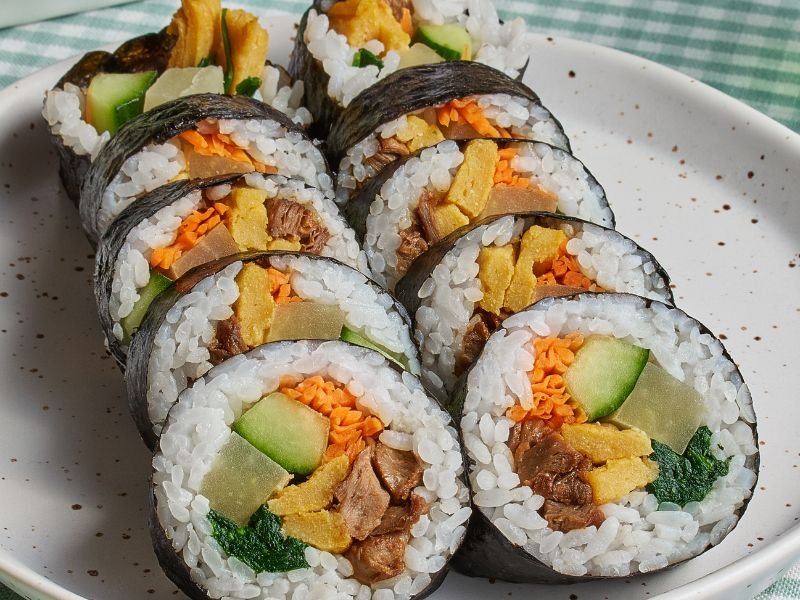
Gimbap, sometimes called “Korean sushi,” is a rice roll wrapped in seaweed (gim) and filled with ingredients like eggs, pickled radish, carrots, spinach, and meat or fish. The rice is lightly seasoned with sesame oil and salt, giving it a nutty aroma. Each slice offers a colorful cross-section of fillings, making it both nutritious and appealing. Gimbap is a staple for picnics, lunch boxes, and on-the-go meals. Though it resembles Japanese sushi, its flavor is distinctly Korean — less vinegary and more savory. It’s a versatile, portable meal loved for its convenience and delightful taste.
Hotteok (호떡):

Hotteok is a sweet Korean pancake that’s especially popular during the winter season. The dough, made from wheat flour and yeast, is filled with a mixture of brown sugar, cinnamon, and chopped nuts before being pan-fried to golden perfection. When bitten into, the warm, melted sugar filling oozes out, creating a comforting treat that’s both chewy and crispy. Street vendors often sell Hotteok freshly made, filling the air with a sweet aroma. It’s a nostalgic snack that captures the warmth and sweetness of Korean winter traditions.
Mandu (만두):
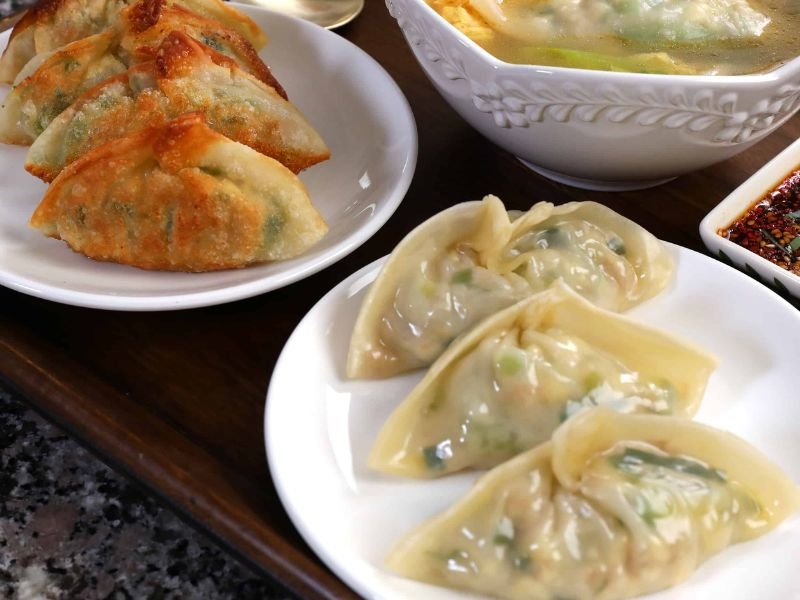
Mandu are Korean dumplings filled with a mix of minced pork, vegetables, tofu, and sometimes kimchi. They can be steamed, pan-fried, deep-fried, or boiled in soups like mandu-guk. Each cooking method offers a different texture — from crispy golden edges to soft, tender bites. Mandu are often served with a soy-vinegar dipping sauce and are enjoyed both as a side dish or a main course. They are especially popular during Korean holidays such as Lunar New Year. Mandu’s satisfying flavor and versatility make it a beloved comfort food throughout Korea.
Pajeon (파전):

Pajeon is a savory Korean pancake made primarily with scallions (pa) in a light batter of flour, eggs, and water. It’s crispy on the outside and soft inside, often featuring seafood such as squid, shrimp, or clams in the popular variation called Haemul Pajeon. The pancake is usually served with a soy-based dipping sauce that enhances its umami flavor. Pajeon is a favorite dish on rainy days in Korea, often enjoyed with makgeolli (rice wine). Its balance of crispiness, freshness, and mild savoriness makes it an irresistible comfort food.
Korean Side Dishes (Banchan) – Small Plates, Big Flavors
Kimchi (김치):
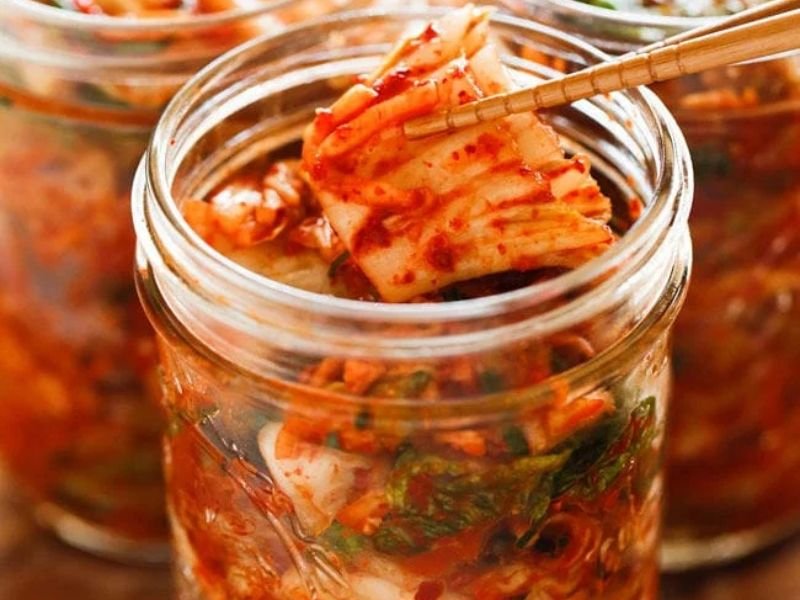
Kimchi is the heart of Korean cuisine — a fermented side dish made primarily from napa cabbage, radish, and a blend of chili pepper, garlic, and salted seafood. It comes in countless varieties, ranging from mild and tangy to fiery and pungent. Kimchi is served at almost every Korean meal and plays a vital role in balancing flavors. Beyond its bold taste, it’s packed with probiotics and nutrients, contributing to a healthy diet. Whether eaten alone, mixed in stews, or fried with rice, kimchi represents the soul of Korean culinary tradition.
Jangajji (장아찌):
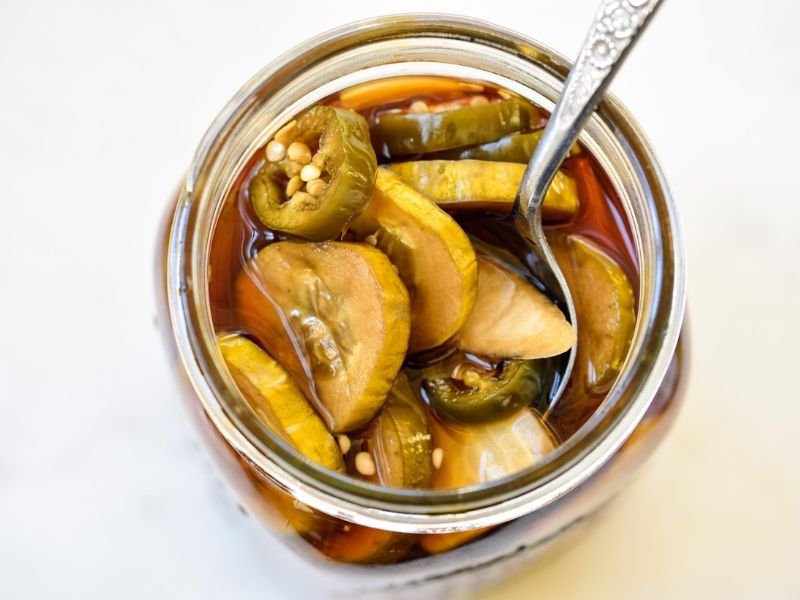
Jangajji is a type of Korean pickle made by marinating vegetables such as cucumbers, garlic, chili peppers, or radishes in a soy sauce, vinegar, or doenjang brine. Unlike kimchi, it’s not fermented but rather preserved, offering a crisp texture and salty-sour taste. Jangajji adds a refreshing contrast to rich, spicy Korean dishes, cleansing the palate. It’s often served as a banchan (side dish) in traditional meals. Simple yet flavorful, Jangajji highlights Korea’s skill in preserving seasonal produce while creating a perfect balance of taste and texture.
Sigeumchi Namul (시금치나물):
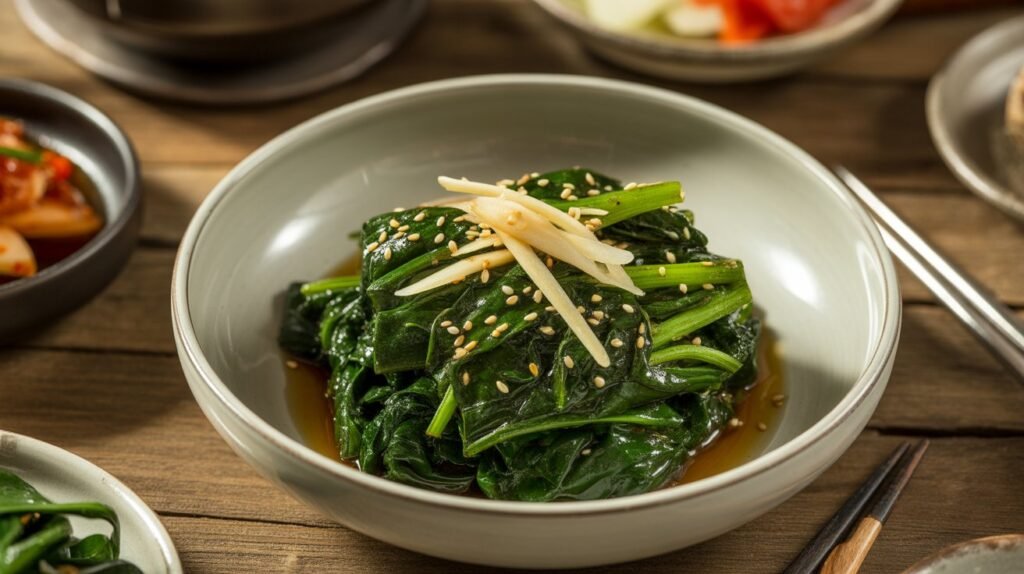
Sigeumchi Namul is a light and healthy Korean side dish made from blanched spinach seasoned with garlic, sesame oil, soy sauce, and sesame seeds. The spinach retains a fresh, bright green color and a slightly nutty aroma. This simple dish is often part of bibimbap or a typical Korean meal set, adding freshness and nutrition to the table. Its clean, savory flavor perfectly complements spicy or grilled dishes. Sigeumchi Namul showcases the Korean approach to simplicity — transforming basic ingredients into dishes full of balance, health, and harmony.
Health Benefits of Korean Food
One reason Korean food is gaining global recognition is its focus on health. Many dishes are rich in vegetables, fermented ingredients, and lean proteins. Kimchi and fermented pastes promote good gut health, while soups and stews offer hydration and minerals.
Unlike heavily processed fast food, traditional Korean meals are balanced and portion-controlled. The emphasis on fresh produce and low-fat cooking methods makes it both wholesome and satisfying.
Final Thoughts
Korean food is a celebration of flavor, culture, and community. It’s about more than ingredients — it’s about connection. Every dish tells a story of tradition, family, and creativity. Whether you’re enjoying a comforting bowl of kimchi jjigae, sharing grilled bulgogi with friends, or tasting street food in Seoul, Korean food brings people together in the most delicious way.
So next time you crave something bold, healthy, and unforgettable, explore Korean cuisine — where every meal is a perfect balance of spice, sweetness, and soul.
Want to continue your global food journey? Explore our curated guides to Chinese restaurants in the USA , Thai restaurants , and Indian restaurants for more authentic flavors from Asia.
FAQs
1. What is Korean food known for?
Korean food is known for its bold flavors, colorful presentation, and balance between spicy, sweet, salty, and savory tastes. It often includes fermented dishes like kimchi, grilled meats such as bulgogi, and hearty stews like kimchi jjigae. The use of gochujang (red chili paste) and sesame oil gives Korean cuisine its signature depth and aroma.
2. What are the most popular Korean dishes?
Some of the most popular Korean dishes include bibimbap, bulgogi, kimchi jjigae, tteokbokki, and Korean fried chicken. These meals showcase a variety of cooking techniques — from grilling and stir-frying to fermenting and stewing — offering a full spectrum of authentic Korean flavors.
3. Is Korean food spicy?
Not all Korean food is spicy, but many dishes use chili-based ingredients like gochujang or gochugaru (red chili flakes). Spicy dishes such as kimchi jjigae and tteokbokki are famous, but there are also mild options like japchae (glass noodles) and samgyetang (ginseng chicken soup) for those who prefer gentler flavors.
4. What makes Korean cuisine healthy?
Korean cuisine emphasizes fresh vegetables, lean proteins, and fermented foods rich in probiotics. Dishes like kimchi, doenjang jjigae, and bibimbap provide essential nutrients while being low in saturated fats. The traditional meal structure — rice, soup, and several vegetable side dishes — encourages balanced eating.
5. What are typical ingredients used in Korean cooking?
Common ingredients in Korean cooking include rice, garlic, sesame oil, soy sauce, gochujang (red chili paste), doenjang (soybean paste), and a variety of vegetables like napa cabbage, radish, and scallions. These staples form the base of many sauces, marinades, and stews.
Sub Keywords
kimbab,korean street food,korean side dishes ,korean cuisine guide,authentic korean food,traditional korean dishes,healthy korean food,fermented korean food,korean comfort food,korean food culture,korean food near me,korean food recipes,korean food for beginners,korean cooking ingredients,korean soup (jjigae) dish,korean street snack,vegan korean food

